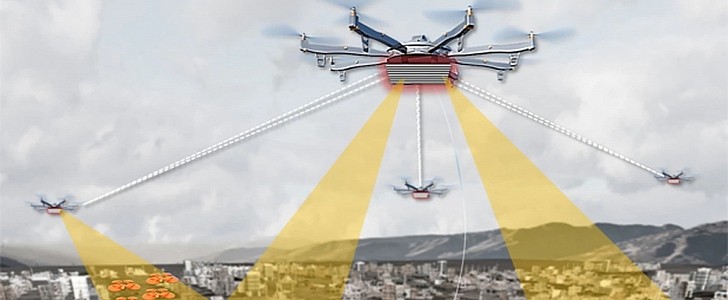There’s been a lot of talk lately about drones as a huge military asset. But, since everybody seems to be doing the same thing, the question becomes: how do we counteract them? The U.S. military is also focusing on drones as a threat and what are the best ways to tackle this threat. Aerial Dragnet has the answers.
Drones are a serious security threat not just because they can gather sensitive data, but also because they can carry explosives. And one of the things that makes them even more dangerous is the fact that the small ones are hard to detect.
So, how do you combat an “invisible” enemy, especially since any type of future conflict is more likely to take place in urban environments? It’s one thing to be up against tanks in the desert, and another thing to try to locate small unmanned aircraft systems among skyscrapers.
The answer seems to be – by using another drone. One that has special sensors.
That is why DARPA (Defense Advanced Research Projects Agency) is developing Aerial Dragnet, a program that is testing drones equipped with sensors, for detecting and monitoring small drones in urban settings.
By using optical and acoustic sensors, as well as radars, the Aerial Dragnet is able to detect small drones and collect essential data about them. The plan is for it to then coordinate with C-sUAS systems that would use the data to actually destroy the threat.
Although Aerial Dragnet is not quite there yet, DARPA’s extensive testing so far shows that this project is ready for its next steps. According to Paul Zablocky, a program manager with the DARPA Strategic Technology Office, the agency is now looking for organizations that can take over Aerial Dragnet and make the most out of it.
During a C4ISRNET Conference, Zablocky also stated that during the testing of Aerial Dragnet, which began a couple of years ago, one of the main challenges was to refine signal algorithms, in order to minimize data interference.
And, if you’re thinking that Aerial Dragnet is another one of those expensive military projects, you’d be wrong. According to DARPA, it would only cost $20,000.
So, how do you combat an “invisible” enemy, especially since any type of future conflict is more likely to take place in urban environments? It’s one thing to be up against tanks in the desert, and another thing to try to locate small unmanned aircraft systems among skyscrapers.
The answer seems to be – by using another drone. One that has special sensors.
That is why DARPA (Defense Advanced Research Projects Agency) is developing Aerial Dragnet, a program that is testing drones equipped with sensors, for detecting and monitoring small drones in urban settings.
By using optical and acoustic sensors, as well as radars, the Aerial Dragnet is able to detect small drones and collect essential data about them. The plan is for it to then coordinate with C-sUAS systems that would use the data to actually destroy the threat.
Although Aerial Dragnet is not quite there yet, DARPA’s extensive testing so far shows that this project is ready for its next steps. According to Paul Zablocky, a program manager with the DARPA Strategic Technology Office, the agency is now looking for organizations that can take over Aerial Dragnet and make the most out of it.
During a C4ISRNET Conference, Zablocky also stated that during the testing of Aerial Dragnet, which began a couple of years ago, one of the main challenges was to refine signal algorithms, in order to minimize data interference.
And, if you’re thinking that Aerial Dragnet is another one of those expensive military projects, you’d be wrong. According to DARPA, it would only cost $20,000.

